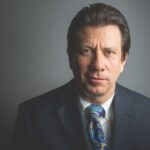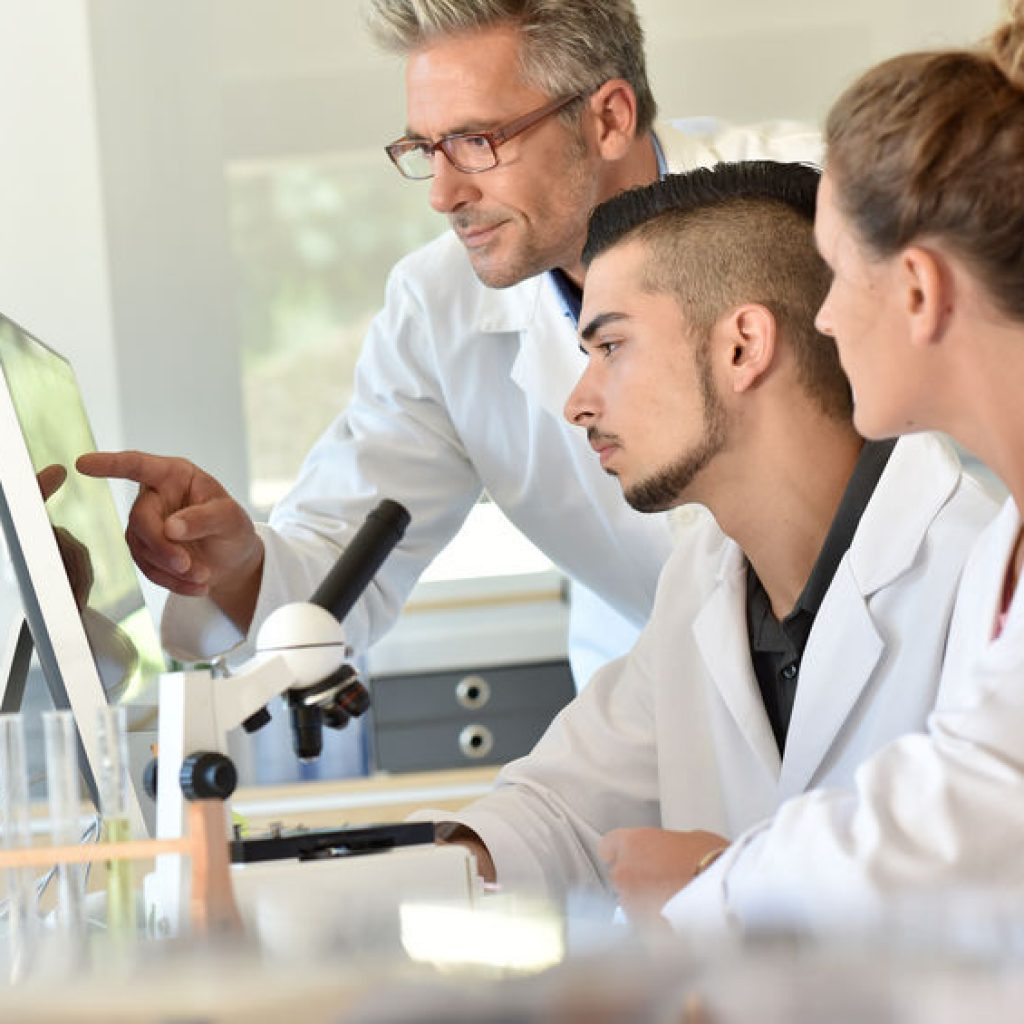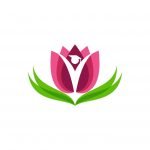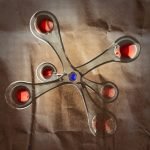FRASER SMITH, MATD, ND
Naturopathic medical education is deeply rooted in science, and those roots extend in several directions. One aspect of this rootedness is the education we provide to students on how to evaluate the evidence for various treatment options. Another is that naturopathic medical students thoroughly study human structure and function and the pathological (including molecular and genetic) basis of disease. The graduates can use information gathered from the patient interview, physical examination, laboratory data, and imaging/special tests to support, or refute, their hypothesis about what is causing the patient’s symptoms. A sometimes-overlooked aspect of this science is the ability of naturopathic physicians to relate clinical symptoms to changes in function that originated with disturbances to the determinants of health. This is at the heart of this naturopathic approach that is grounded in “health restoration,” as opposed to shifting pathological states into “other” states that are far more benign and tolerable but not necessarily homeostatic.
Common Roots of Medicine
This matter of providing a scientific education to the 21st-century naturopathic medicine student is one that will be addressed across several entries in this column. But to start the discussion off, let’s examine how medical education, in general, came to rest on a scientific basis. The establishment of medicine on a rational basis has roots in antiquity. The late 19th century saw a revolution in medicine driven by new biomedical sciences. Moreover, the power of data processing, searching, and filtering, combined with an ever-accumulating knowledge, has given the healing arts a new layer of science to guide diagnosis and treatment.
Why examine this particular root? It reveals our common ancestry with allopathic medicine and the universality of pure biological science, in spite of the fact that dominant allopathic medicine claims this for itself. (It is a fine piece of casuistry to say that pure science solely supports a single therapeutic approach that is in vogue at any given moment). And, finally, the professional formation that resulted from allopathic medicine’s embrace of biomedical knowledge is one that helped propel that profession to the apex of cultural authority over all rival systems.1 We shall ask the question: to what degree ought we imitate allopathic medicine in this regard, or is there a divergent but valid way for naturopathic medical education to help students think about evaluating and treating patients that derives from the same set of biological observations?
Medicine as a Vocation
It would seem that many cultures and peoples, across many times, have had some group that did medicine as a profession. The tradition that leads to biomedicine/allopathic medicine, naturopathic medicine, and other branches of medicine we know (such as osteopathic medicine), can trace its roots back to Greek medicine. That lineage has important inputs from Africa, the Middle East, ancient Persia, and the local folk healers and midwives in the European milieu. The Hippocratic school of medicine is a convenient, and undoubtedly fecund, group that did center around a historical figure.
The teachings of Hippocrates and the camp, or “school,” around him demonstrate a transition to medicine based on clinical observation and reason.2 Signs and symptoms were meticulously recorded and related to disease pictures or vignettes. Prognoses for these disease states were likely based on collected observations. Treatment was likewise experiential, but definitely cumulative. The physician, the patient, and the natural world were seen as a triad, with the doctor there to support and guide the “physis,” or life force. This was considered productive because the inborn tendency to self-repair, to make the system whole again (to heal), was the basis of the Vis Medicatrix Naturae. The Hippocratic school had a theory – a humoral theory of disease – but subtracting this theory still leaves a precise description of clinical states, time-tested therapeutic interventions, and the relationship of signs and symptoms (and clinical course) to a detection of these clinical states. In a sense, our 2nd-year course on physical diagnosis is a way of “joining a club that has been meeting for centuries,” to paraphrase the late Dr Joseph Sapira.3 Rival schools of thought in Greek medicine at the time were more invested in naming disease categories, whereas the Hippocratic school was in a way more interested in pure clinical data, which was organized into clinical profiles or disease pictures. In a period noted for its absence of specific chemical, biological, or physiological knowledge that could explain these disease states, we could say that the Hippocratic school wins for fidelity to a reliable method.
Medical Stag-notions
Over centuries, this method degenerated as more theory, speculation, and reliance on tradition corroded through the initial brilliance of it. There were bright spots, though: an infusion of experimental and anatomical knowledge by Galen, Celsus’ description of inflammation, the therapeutic refinements introduced by Arab physicians, and much more. However, by the time that the bubonic plague, and certainly syphilis, ravaged that society, medicine was bereft of predictive and therapeutic power. Strong critics, such as Paracelsus and (later) Hahnemann, led a charge for empirical data and inductive reasoning against ivory tower hokum, and this seemed to further challenge an arrogant and anachronistic profession that was still searching for a new model. But the latent potential of the emerging physical, and then biological, sciences is what eventually transformed it.
Medical Reformation
Important advances in chemistry and physics preceded the biological ones, and when these advances arrived, they changed medicine forever. Bacteriology and virology gave rise to an entire new germ theory, replete with vaccines, antimicrobials, and eventually antibiotics. Virchow’s Cellular Pathology created a new way to identify changes based on samples or on autopsy.4 Diagnosis using urine, and then blood samples, brought in a whole new way to diagnosis and monitor; anemia, kidney function, electrolyte disorders, and much more were suddenly measurable. Radiography allowed for images of bodily structures. The list is easy to add to.
Allopathic medicine did not change overnight. There were still plenty of old-school physicians administering calomel (mercury chloride) while the scientific basis of allopathic medicine was being laid down. By the 20th century, mainstream medical doctors put these old practices, and much of its history, behind them, and recast themselves as a legion of scientist-healers. An epitomizing moment arrived when Johns Hopkins hired Sir William Osler to be the founding dean of its new medical college.5 Osler, the preeminent physician of his time, put together a dream-team of experts in pathology, surgery, and internal medicine. Similar evolutions occurred at Harvard. The so-called German model was a scientific education with plenty of laboratory instruction, followed by learning medicine at the bedside, and it became the standard.
The Irregulars
If we consider the time-frame of this quantum jump as the period from 1880 to 1925, this is roughly the time-frame that various “irregular schools” grew. Naturopathic medicine per se came along in the 1890s as Benedict Lust assembled his collaborators for what could be called “Kneipp cure deluxe.”6 The Eclectic school reached its apogee. So did the homeopathic movement, which at the turn of that century was very large and well established in many places but which was fading away by the time the Great Depression scoured the economic and professional landscape. Chiropractic and osteopathic medicine grew, and survived.
Rise and Fall of the Naturopaths
Naturopathic education does have pre-clinical studies, including pathology and some human structure and function. We don’t have to really buy the conclusions of the very biased Flexner report to assume that Lust’s little school above a health food store did not have the depth of education in biomedical sciences that the better allopathic schools would have (many of the lesser ones did not survive the purge that followed the Flexner report). From reading about Lindahr’s work at his nature-cure college in Chicago,7 it is clear that his students learned diagnosis and what nutritional biochemistry was available at the time. My sense from reading the works of Sussanna Czeranko is that those early naturopathic doctors were quick to apply the new findings of biomedicine to problems of health. (Dr Czeranko’s works, by the way, are a blessing to those of us who like to read naturopathic history but are not historians in any sense; her harvest of insights and documents from the archives is ready reading for anyone who wants to learn.) Deterioration of health and the reestablishment of health were their aims. Nevertheless, by the 1950s the naturopathic programs of study at National College of Drugless Healing (a component of National College of Chiropractic, now National University of Health Sciences) and Western States College were closed.
Naturopathic Medicine Arrives
Those of us who attended naturopathic college know what happened next. A group of the remaining naturopaths had the vision and the determination to start a new college: NCNM. The basis of this has been well described elsewhere, including in George Cody’s chapter in the Textbook of Natural Medicine.6 A point to recall about this is that the comeback involves naturopathic medicine, not just naturopathy. This time around, a thorough grounding in human biology and diagnosis was the bedrock upon which a modern naturopathic medical education was built.
This evolved, and reached the point where the pre-clinical studies in human structure and function, and pathology, could rival any allopathic college. A newer fold was the increased need for literacy in the review of evidence that supports treatments, diagnostic testing, and lifestyle recommendations.
This “2 plus 2” model (2 years pre-clinical, 2 years clinical), mirrors the definition of what a medical education was in the mid-20th century. In 2021, there are changes, with longer residencies and a more contracted pre-clinical phase (sometimes less than 2 years); however, some progression, from understanding key scientific concepts to learning how practice works, is still there.
Questions Worth Asking
Some valuable educational questions for naturopathic medicine include the following:
First, have the goalposts of primary healthcare provider training shifted? Is allopathic medical education really doing what it has done for decades, or has it moved on from the time-honored “2 plus 2” model that Osler created? If so, how is that possible without degrading their education? What have they moved to? Where are we headed?
Second, has the meaning of a scientific education for a physician changed as science has advanced? Of course, any physician has to know anatomy and basic body chemistry. But we see in our institutions a reflection of the progress in medical sciences. Genomics, cell signaling, human microbiome interactions, environmental health, and many other subjects are rightly included in our contemporary education. At what point does the difference between the curriculum of a 21st-century student and that of a 20th-century student approximate the radical difference between curriculums of a student in 1950 vs 1850?
Third, what are the trends for where a scientific education is heading? For instance, the ability to retrieve articles through databases such as PubMed (Medline) has changed our work, but we “ain’t seen nothing yet,” as Randy Bachman would say. Medical informatics, especially as applied to an individual’s genotype and phenotype, will play a powerful role in making a diagnosis and creating a treatment. AI-powered, sophisticated algorithms are going to increasingly be used to provide physicians with suggestions about diagnosis and treatment.8,9 This will go beyond simply amassing evidence; it will lead to the interpretation of data as well as some kind of decision-making assistance.
Finally, is the use of biomedical knowledge and data science to create pharmaceutical treatments that target dysfunction the only legitimate connection between medical practice and science? If not, does the double-blind trial of 1 treatment versus 1 end-point reign supreme for all other modes of healing? Or, are there other approaches that are neither constrained nor defined by the pharmaceutical model? How does 21st-century science power-up a profession that stakes it claim on the intrinsic ability of the human being to self-repair, reorganize, and regenerate? Hippocrates was being very specific and very fact-based when he pointed to the Vis Medicatrix Naturae as the guiding principle for that school of practice. Do we dare challenge the notion that allopathic practice and science are synonymous? Can we claim science, and be willing to be guided by it, and still retain a distinct approach?
In upcoming columns, we will attempt to answer these questions, and examine how the definition of a scientific naturopathic medical education will continue to change.
References:
- Starr P. The Social Transformation of American Medicine. The Rise of a Sovereign Profession and the Making of a Vast Industry. New York, NY: Basic Books; 2017.
- Marketos SG, Skiadas PK. The modern Hippocratic tradition. Some messages for contemporary medicine. Spine (Phila Pa 1976). 1999;24(11):1159-1163.
- Orient J. Sapira’s Art and Science of Bedside Diagnosis. Philadelphia, PA: Lippincott, Williams & Wilkins; 2018.
- Ribatti D. Rudolf Virchow, the founder of cellular pathology. Rom J Morphol Embryol. 2019;60(4):1381-1382.
- Johns Hopkins Medicine. The Founding Physicians. 2021. Available at: https://www.hopkinsmedicine.org/about/history/history-of-jhh/founding-physicians.html. Accessed January 25, 2021.
- Cody GW, Hascall H. The History of Naturopathic Medicine: The Emergence of an American School of Healing. In: Pizzorno JE, Murray MT, eds. Textbook of Natural Medicine. Fourth Ed. St. Louis, MO: Churchill Livingston; 2012:34.
- Elmhurst Historical Society. The Lindlahr Sanitarium. Available at: https://www.elmhurst.org/DocumentCenter/View/261/Lindlahr-Sanitarium?bidId=. Accessed January 25, 2021.
- Koks G, Pfaff AL, Bubb VJ, et al. At the dawn of the transcriptomic medicine. Exp Biol Med (Maywood). 2020:1535370220954788. doi: 10.1177/1535370220954788. [Epub ahead of print].
- Masters K. Artificial intelligence in medical education. Med Teach. 2019;41(9):976-980.

Fraser Smith, MATD, ND is Assistant Dean of Naturopathic Medicine and Professor at the National University of Health Sciences (NUHS) in Lombard, IL. Prior to working at NUHS, he served as Dean of Naturopathic Medicine at the Canadian College of Naturopathic Medicine (CCNM) in Toronto, Ontario. Dr. Smith is a licensed naturopathic physician and graduate of CCNM.




